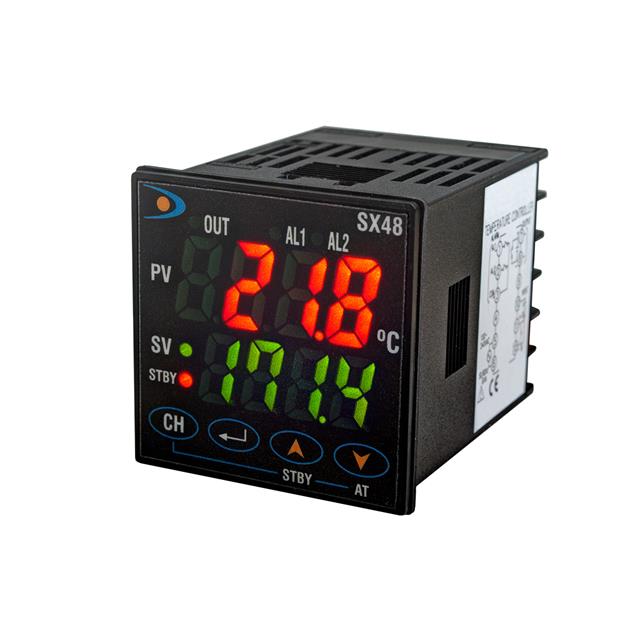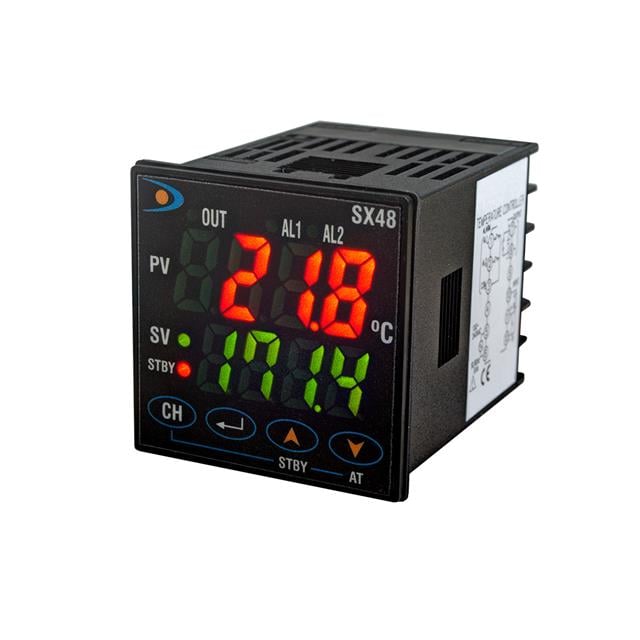SX Series, Controllers - Process, Temperature
Results:
2
Manufacturer
Series
Output Type
Display Characters - Height
Ingress Protection
Termination Style
Control Method
Panel Cutout Dimensions
Number of Characters Per Row
Communications
Mounting Type
Type
Display Type
Voltage - Supply
Input Range
Features
Results remaining:2
Applied Filters:
SX
Controllers - Process, Temperature
Process and temperature controllers are essential devices used in various settings to maintain a process variable, specifically temperature, at a desired set point. These small, integrated devices are designed to monitor and regulate temperature by using sensors such as a thermocouple or RTD, which is usually located external to the controller. The basic function of these controllers is similar to that of a household thermostat. They provide an on/off signal that can be used to control a device such as a heater or furnace to maintain a specific temperature at a desired set point. The controller continually monitors the temperature and sends signals to the device to turn it on or off as needed to maintain the desired temperature. More advanced process and temperature controllers come with higher-level communication capabilities and sophisticated control algorithms to improve connectivity and temperature control performance. Advanced controllers use more complex algorithms that enable them to predict temperature changes and make adjustments to the heating or cooling system accordingly, resulting in more precise temperature control and improved energy efficiency. Additionally, advanced process and temperature controllers can be integrated into a larger system, allowing for remote monitoring and control of multiple devices. This feature is particularly useful in industrial settings where multiple devices need to be controlled and monitored from a central location. In summary, process and temperature controllers are small, integrated devices used to maintain a process variable, usually temperature, at a desired set point. They use sensors to monitor and regulate temperature and provide an on/off signal to control devices such as heaters or furnaces. Advanced controllers come with higher-level communication capabilities and sophisticated control algorithms to improve connectivity and temperature control performance. They can also be integrated into a larger system, enabling remote monitoring and control of multiple devices.


